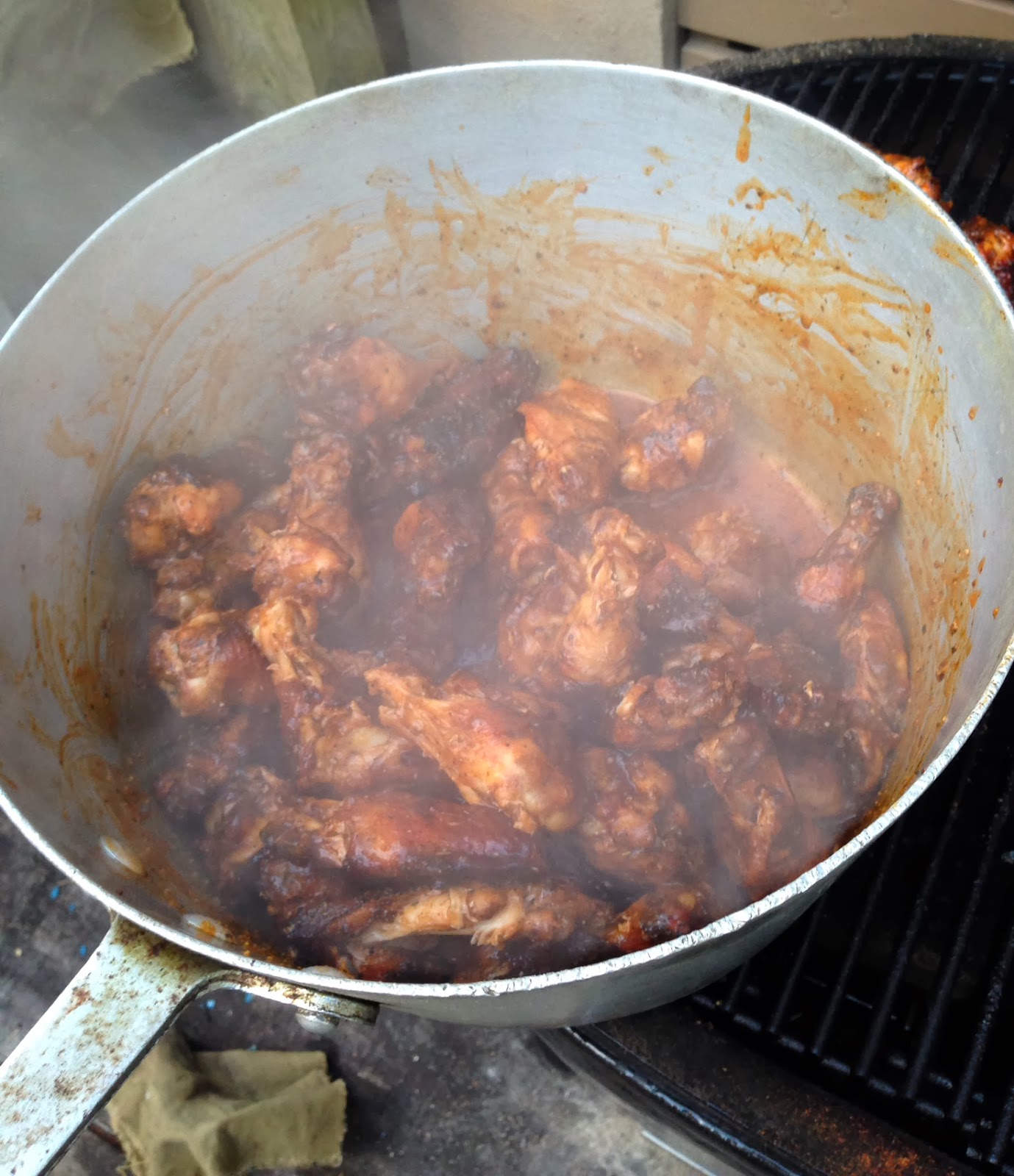A couple of weeks ago I was poking around on the internet, trying to find something new and unique to cook for Super Bowl Sunday, when I came across a mind-blowing statistic. According to the National Chicken Council, North Americans will eat 1.25 billion wings on Super Bowl Sunday. That's four wings for every person in this country. It was immediately clear, I had to cook my chicken wings I had spent so long working to perfect. You see, in 1995, we lived next-door to a guy named David. David had a tradition of cooking hot wings for the
Daytona 500 and for years I watched in amazement as he crafted some of the best wings I have
ever tasted. Inspired by his masterpiece, I have spent the last several
years sharpening my skills, trying to
create a wing recipe that is worthy of David's Daytona 500 bone-sucking wings.

It all starts with two, four-pound bags, of wings. I load my Primo Oval XL
with about three handfuls of lump charcoal and four hickory chunks. I have found, for a cook like this where I'm not trying to go low and slow, I use a handheld torch to light four different spots in my pile of lump. I then place the chunks of hickory in the four spots that are not lit. That way, I can bring the temp up without burning up my smoke wood. I then drop my diffuser stones into place, put down my grates, clip my thermometer sensor to the grate, and close the lid. I then bring the temp up to 300 degrees.


The trick to these wings is it involves a three-part flavoring process. Begin by putting the wings on the grill and sprinkling on Swampy's Cajun Seasoning. Let them cook for about thirty minutes and then flip. Then sprinkle on the Monterey Ranch seasoning mix. It is made up of a combination of Grill Master Monterey Seasoning and a packet of Hidden Valley Ranch Seasoning. Cook the wings for thirty more minutes then soak them in a Texas Pete buffalo
wing sauce. Melt 1/2 stick of unsalted
butter with the buffalo sauce.
Put
the wings back on the grill, to tighten them up, for an another ten minutes or until your desired
crispiness. At this point, it's perfectly fine to check on them frequently and take them off when the color and crispiness is where you want it.
Serve the wings
with ranch, blue cheese and enjoy.















